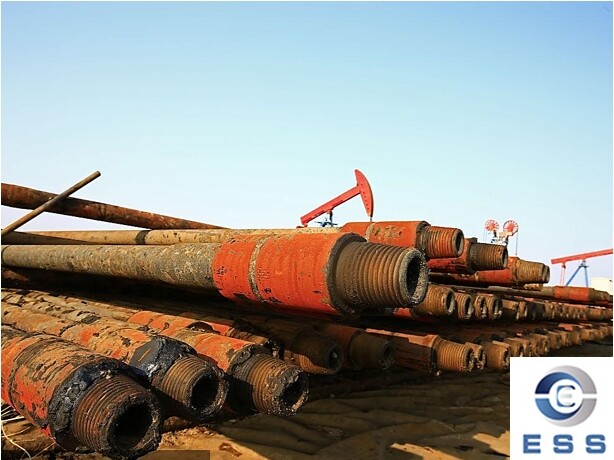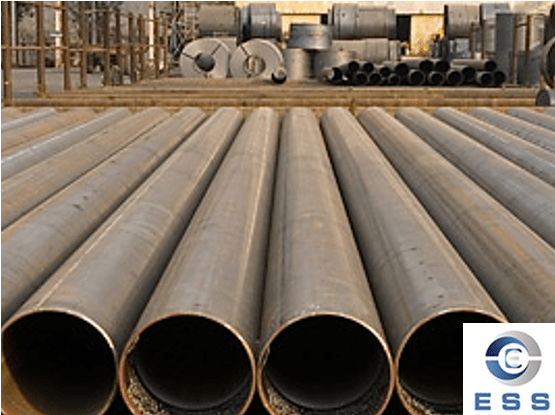
As an indispensable key component in
drilling operations, the performance and safety of drill pipe is directly related to the smooth progress of drilling work and the safety of
operators. In the fields of oil, natural gas, geological exploration and
hydrological drilling, the quality inspection of drill pipes is particularly
important.
Importance of inspection
As a typical representative of OCTG pipe, drill
pipes are subjected to huge pressure, torque and vibration during drilling, and
are also faced with problems such as wear, corrosion and fatigue. Failure of
drill pipes may lead to interruption of drilling operations and even cause
serious safety accidents.
Therefore, regular inspection of drill
pipes can timely discover potential problems, prevent accidents, and ensure the
continuity and safety of operations.
Common problems with drill pipes
1. Wear: During the use of drill pipes,
both the inner and outer surfaces may be worn due to friction.
2. Corrosion: Under certain circumstances,
drill pipes may be subject to chemical or electrochemical corrosion.
3. Fatigue: Fatigue cracks may occur in
drill pipes under long-term cyclic loads.
4. Plastic deformation: Under high
pressure, drill pipes may undergo plastic deformation.
5. Thread damage: The thread is the key
part of the drill pipe connection and is susceptible to damage.
Drill pipe inspection items
1. Appearance inspection: Check whether
there are cracks, corrosion, wear and tear on the surface of the drill pipe.
2. Dimension inspection: Measure the
diameter, length, thread accuracy and other parameters of the drill pipe to
ensure compliance with the standards.
3. Mechanical property inspection:
Including tests such as tensile strength, yield strength, impact toughness,
torsion test, etc.
4. Non-destructive testing: Use ultrasonic,
magnetic powder, penetration and other methods to detect whether there are
defects inside the drill pipe.
Key points of inspection analysis
1. Appearance inspection
Use high-brightness light source and
appropriate magnification equipment to carefully check whether there are
scratches, indentations, corrosion pits and other defects on the surface of the
drill pipe. Pay special attention to whether there is deformation, wear or
cracks at the drill pipe joint. Check whether the coating is complete and
uniform, and whether there is any shedding or blistering.
2. Dimension inspection
Use precision measuring tools such as
calipers, micrometers and thread gauges to accurately measure the diameter,
length and thread parameters of the drill pipe. Pay attention to the diameter
changes in different parts to ensure the accuracy of the measurement results.
3. Mechanical property testing
Tensile test is used to understand the
tensile strength, yield strength and torsion performance of the drill pipe, and
impact test is used to evaluate the impact toughness of the drill pipe. Bending
test can detect the bending resistance of the drill pipe.
4. Nondestructive testing
Ultrasonic testing: Select appropriate
probes and coupling agents, pay attention to the moving speed and angle of the
probe, and ensure that the test covers the entire drill pipe.
Magnetic particle testing: Select
appropriate magnetic powder and application method to ensure that the magnetic
powder can evenly cover the surface of the drill pipe and improve the detection
sensitivity.
Penetrant testing: Control the penetration
time of the penetrant to ensure the cleaning effect, and use appropriate light
sources to check the development effect of the penetrant.
Testing precautions
1. Preparation before testing: Ensure that
the surface of the drill pipe is clean and free of oil, dust and other debris
to avoid affecting the accuracy of the test.
2. Operating specifications: The test
personnel must strictly follow the test operating procedures to avoid
misjudgment or missed detection due to improper operation.
3. Data recording: During the test process,
various test data should be recorded in a timely and accurate manner, including
measurement values, defect locations and other information.
4. Multiple measurements: For key
parameters, multiple measurements should be taken and the average value should
be taken to improve the reliability of the test results.
5. Environmental monitoring: Pay attention
to the temperature, humidity and other conditions of the test environment to
ensure that they meet the test requirements and avoid environmental factors
affecting the test results.
6. Test sequence: Perform tests in a
reasonable test sequence to avoid missed tests or repeated tests.
7. Abnormal situation handling: If an
abnormal situation is found, the test should be stopped in time, the cause
should be analyzed, and corresponding measures should be taken to deal with it.
8. Comparative analysis: Compare and
analyze the test results with the standard value or historical data to find
potential problems in time.
Summary
Drill pipe detection is an important part
of the drilling industry. It is not only related to the efficiency and cost of
the operation, but also to the safety of the operators and the normal operation
of the drilling equipment. With the development of technology, drill pipe
detection methods are also constantly improving. More automated and intelligent
detection equipment will further improve the accuracy and efficiency of
detection. Therefore, drilling companies should attach importance to drill pipe
detection, select appropriate detection methods and standards, ensure the
reliability and safety of drill pipes, and thus ensure the smooth progress of
the entire drilling operation.
Read more: Size of Drill Pipe or Advantages & Disadvantages of Oil Drill Pipe













 Eastern Steel Manufacturing Co.,Ltd not only improve product production and sales services, but also provide additional value-added services. As long as you need, we can complete your specific needs together.
Eastern Steel Manufacturing Co.,Ltd not only improve product production and sales services, but also provide additional value-added services. As long as you need, we can complete your specific needs together.










